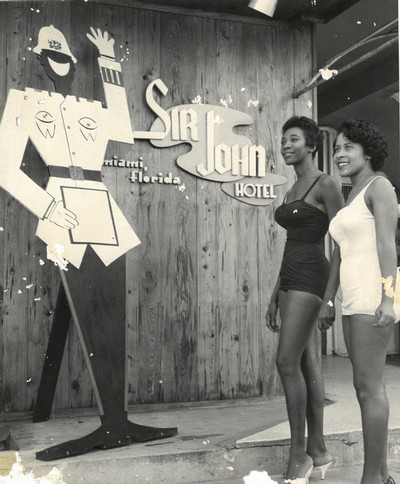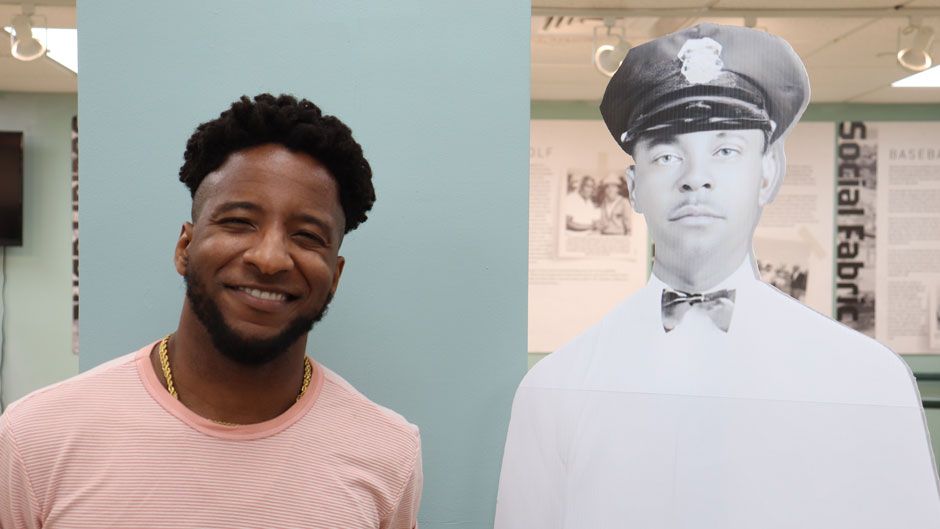A graduate student in the College of Arts and Sciences has curated a new exhibition on local urban history in Overtown.
When he is not present on the Coral Gables campus in his capacity as a student in the Department of English, doctoral candidate Jordan Rogers works part-time as the curator of history at the City of Miami Black Police Precinct and Courthouse Museum.
For the first half of 2024, Rogers conducted research into what life in Miami looked like for Black residents before the construction of highways through the center of Overtown profoundly altered their segregated neighborhoods.
His findings form the core of his exhibition, “Anything but a Slum: Miami-Overtown Before I-95/395.” The exhibition, which will be on display until Nov. 1, 2024, provides a detailed look into the history of segregated Black life in Miami in the decades before the implementation of the U.S. highway system in the 1950s and 1960s.

“My goal was to interrogate the role of race in constructing the modern American city,” Rogers explained. “American cities have a much different look and feel than most major European cities, and I wanted to flesh out the story behind why that is, using Miami as a case study.”
This installation is the museum’s largest and most ambitious temporary show to date. Given that the museum is located next to the major highways that divide Overtown, as well as the Metrorail, a conversation about highway construction seemed particularly relevant to Rogers.
“Highway construction fundamentally changed the nature of this neighborhood,” he said. “The national highway system was a good idea in theory, but its implementation—right through the middle of virtually every Black business district in the country—systematically erased vast amounts of the economic, social, and cultural capital of Black city dwellers across the country.”
“This system of racial oppression is just the latest version of America’s racial ordering, building on the Jim Crow laws of the early 20th century,” Rogers added.
The building where the museum is housed dates to the 1940s, when Overtown community leaders petitioned the city for the right to employ Black officers. Black Miamians strongly preferred Black patrolmen to the city’s oftentimes lawless white officers, some of whom were openly affiliated with the Ku Klux Klan.
“In 1944, Miami became one of the first cities in the nation to allow Black police officers to patrol Black neighborhoods,” Rogers said. “Starting in 1949, the Black officers worked out of this very building, which the City of Miami constructed as a segregated precinct to serve Overtown’s residents. On the second floor, the city’s first Black judges operated a court to process the legal cases that the police officers generated.”
In addition to a space for rotating exhibitions, the museum, which was founded in 2008, houses a permanent collection of historical items that tell the story of Miami’s first Black police officers and judges. Visitors can take guided or self-led tours of the courtroom and work areas for officers, as well as one of the original jail cells.
While Rogers’ exhibit does not directly relate to the history of law enforcement, the officers were a constant presence in his research.
“I encountered a fair amount of still photography and archival footage offering glimpses of Black police officers embedded in Miami’s Black neighborhoods,” Rogers said. “The pioneering generations of Black officers were an integral, well-known, and well-liked part of the Overtown social fabric for the years they operated out of this station. They were clearly beloved and certainly remained that way in Overtown’s collective memory long after their retirements.”

